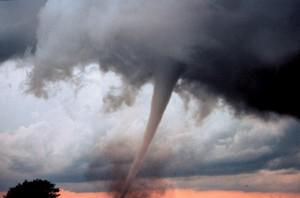TornadoesTornado damage impact could triple in coming decades
Tornadoes are one of the most unpredictable weather phenomena on Earth. Each year the United States, home to more tornadoes than any other country, sustains billions of dollars of damage, death, injuries, and disruption from the violent storms. Scientists say that the potential for annual tornado impact magnitude and disaster could triple by the end of the twenty-first century.

Tornado damage expected to worsen // Source: theconversation.com
Tornadoes are one of the most unpredictable weather phenomena on Earth. Each year the United States, home to more tornadoes than any other country, sustains billions of dollars of damage, death, injuries, and disruption from the violent storms. But, according to the results of a research team led by Stephen Strader, a meteorologist and assistant professor in Villanova University’s Department of Geography and the Environment, the potential for annual tornado impact magnitude and disaster could triple by the end of the twenty-first century. Villanova says that while climate change may be an exacerbating factor for risk, an additional culprit, according to the studypublished in the journal Climatic Change, will be an increasing number of homes, structures, and developed land in tornado-prone regions such as the Central Plains and Southeast.
Although the projected twenty-first century escalation in tornado frequency and magnitude will play a role in elevating disaster consequences, urban sprawl, which increases “societal exposure by building vulnerable man-made structures in the potential path of future tornadoes may be more important than future changes in climatological risk,” Strader and colleagues contend. Metropolitan areas in high-risk tornado regions like Atlanta, Chicago, Dallas and St. Louis, could be at increased disaster probability.
“Because tornado disasters are a product of both the physical environment [tornadoes] and society, our research highlights the importance of examining the effects of both future climate and societal changes on tornado disaster frequency and magnitude,” says Strader.
Proactive measures designed to help combat the effects of increasing tornado disaster potential are recommended, including: building storm shelters or safe rooms; improving hazard risk communication and warning dissemination systems; retrofitting existing structures for greater resiliency; the adoption of new and enforcement of existing building codes and zoning policies that take tornado hazard risk into consideration.
— Read more in Stephen M. Strader et al., “Projected 21st century changes in tornado exposure, risk, and disaster potential,” Climatic Change 141, no. 2 (March 2017): 301–13 (DOI: 10.1007/s10584-017-1905-4)
